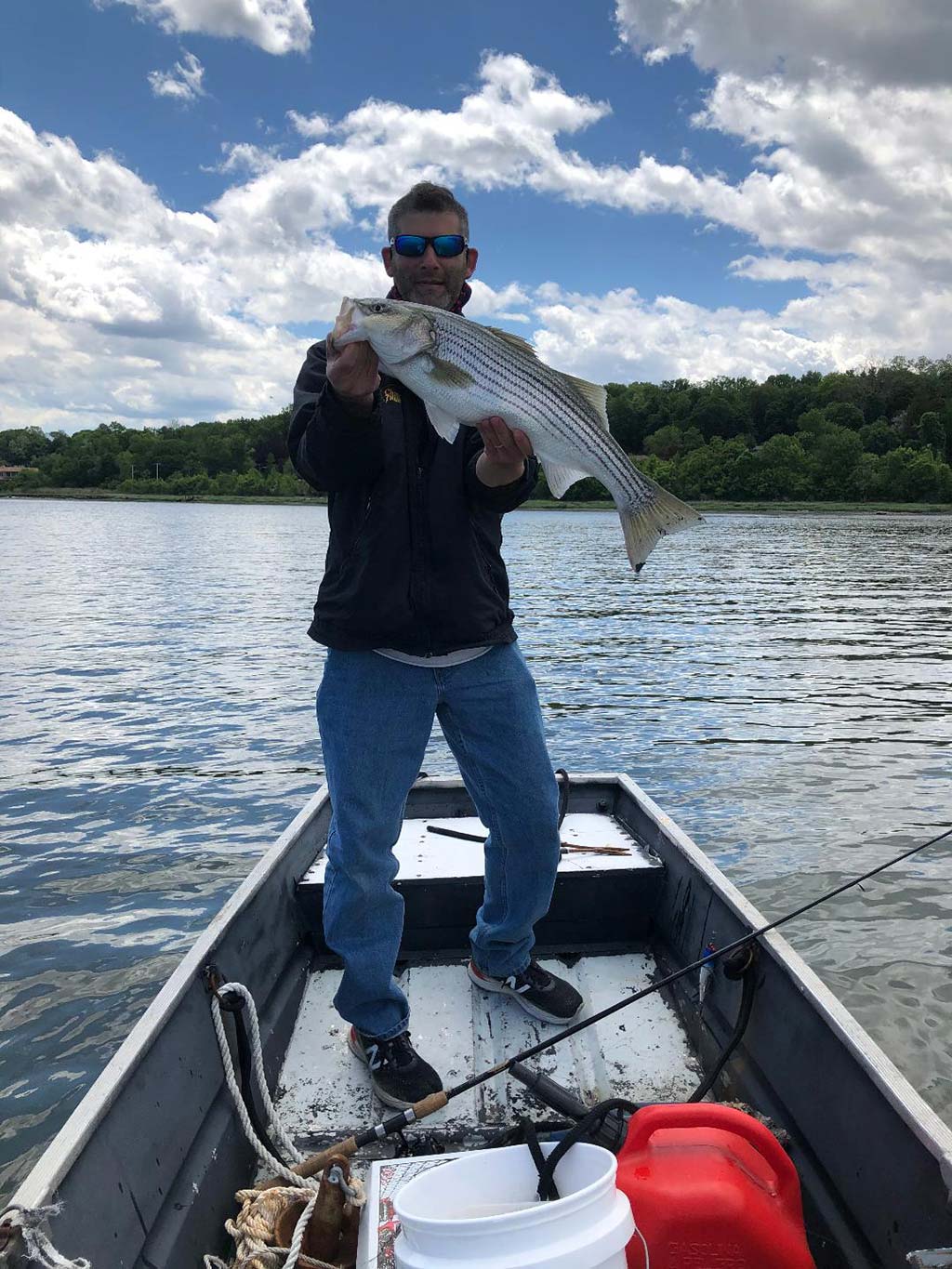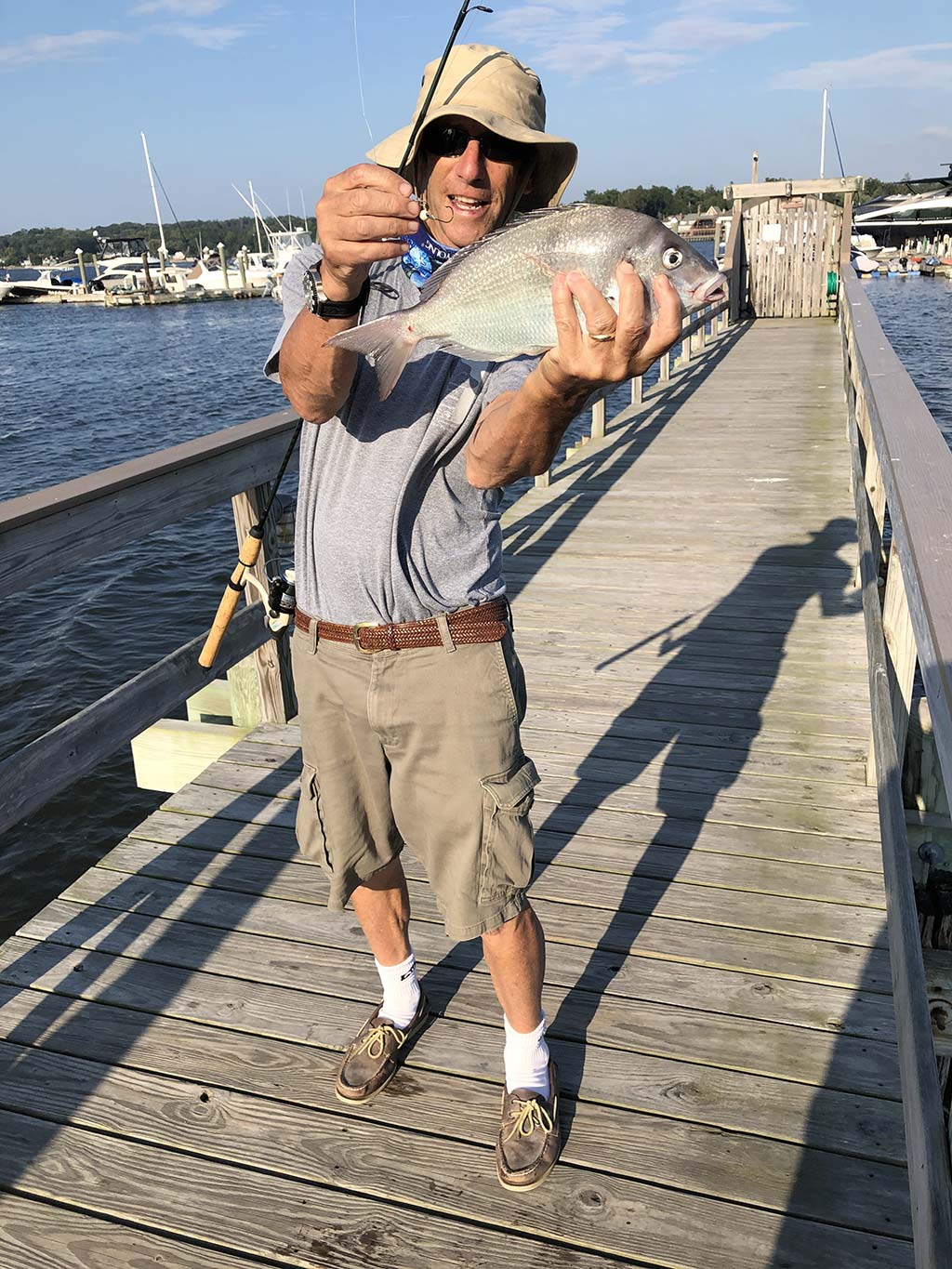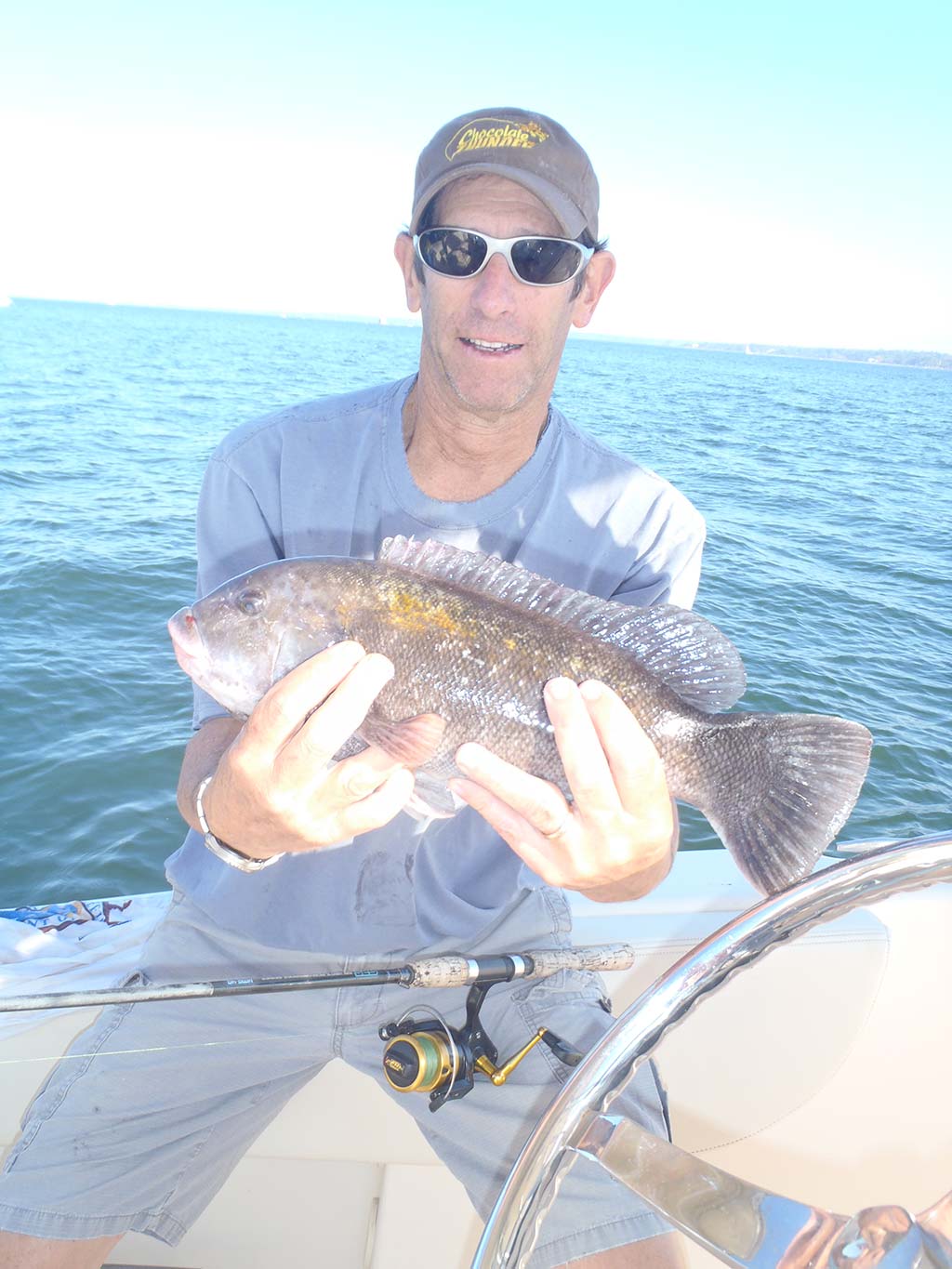
The pandemic inspired many anglers to think outside the box
Blame it on COVID-19, I guess, but humans seemed a little more stir-crazy last spring than usual. It’s easy to understand given that some beaches closed, as did marinas until June, many people were forced to work from home, and travel was greatly restricted. I believe this gave us too much time to think, and sometimes that can be dangerous. For me, without my usual array of spots to fish in the spring, my brain began to wander into the surreal. For example, I put together a few new lure designs and became convinced they would work. Perhaps boredom increases one’s positivity about the unlikely being likely. After all, strange things happen all the time. Once I did get out to fish again, all these new-fangled lures produced from the stir-crazy parts of my brain failed. That was my entry into stir-crazy fishing-related eccentricities, while others went in different directions.
The Tackle Craze
While I was filing, drilling, tying, painting and sanding, others developed their own tackle fantasies. One friend called me in a euphoric state of mind to proclaim he was going to fish for stripers in the summer surf using a 6-foot ultra-light, extra-fast tapered rod, a tiny reel, and 6-pound test line. The length of the rod didn’t strike me as impossible, but the ultra-light and extra-fast tip, well that’s another story. First, such tackle severely limits the size of the lures that can be used. Second, 6-pound test line seems to be well below the limits of tolerance for stripers with sharp gill plates. Of course, there’s also the question of how fair it is to the fish. The outfit he intended to use would require allowing the fish to fight for a long time and therefore stress them greatly. This is especially true with a large fish from the surf. Good sportsmanship is not necessarily fishing with light tackle, it’s also about giving the fish a puncher’s chance to survive after release.
Some anglers in 2020 who tried ultra-light tackle switched back to more appropriate gear after one experience with a big fish. For example, I came upon a friend at Robert Moses and noted that despite his love of very light tackle, he was using a 9-foot rod and reel combo. I said, “What’s up with the tackle, you always use super light stuff.” He said, “Yeah, but I caught a 40-inch fish the other day and it was very difficult to release. It’s just not fair.” Of course, I applauded his decision.
There’s light and there’s super light. Some light gear also has a little backbone and under the right conditions can be used safely and successfully. For example, I’ve been using a 7-foot Teramar rod with a VS 150 and 15-pound test line for years in Long Island Sound, but never on the south shore with waves, winds, sweeps, and heavier lures. Doing so just doesn’t make sense. Using it in quiet water is another matter. My rod is medium power with a fast tip and we all know that the VS 150 has enough power to deal with any angling situation that might arise.

Not Just The Surf!
It wasn’t just surf rats that entered Dali’s world of the surreal. Boat fishermen went berserk, too. A guest on a friend’s boat arrived with a rod barely strong enough to fish for crappie and bluegills. He was very enthusiastic so I avoided bursting his bubble. “Yeah, with COVID stay-at-home orders I decided I’d make my own rod for bottom fishing. What do you think?” he said. I said, “Nice job on the wraps,” and left it at that. I asked, “What pound test do you have on the reel?” “Oh, 6 pound,” he said, “I want to make porgies a little more sporting.” I was reminded of what Scott Simons said to me several decades ago while we drifted for porgies at Montauk. “If porgies grew to 20 pounds, nobody would fish for stripers.” Obviously, an exaggeration, but his point was that porgies are scrappy and therefore a lot of fun, but wrestling them up from 25 feet with a rod and reel intended for panfish was going to be interesting. Sometimes I think some folks have the wrong definition for “sporting.”
Then & Now
I believe the link between light tackle and being sporting goes back many decades to a time when all anglers used what was called “meat” sticks and reels to match. Rods were stubby, powerful and reels were winches that could muscle almost any fish to the surface in no time. However, back then, most fishermen plied the waters to put fish on the table. There was no discussion about being sporting. Even the books and magazine articles in those days rarely discussed the idea of giving the fish on your line a chance.
That changed after World War II. Higher salaries, more free time, and better technology caused some anglers to begin to think in terms of a contest between angler and fish, and less about getting the fish in the bucket as quickly as possible. Just to provide a frame of reference, consider we once used heavy gaudy flounder spreaders, tarred twine for blackfish instead of mono leaders, and hooks for inshore bottom fishing that were much bigger and meatier than today. Over time, many anglers embraced technological progress and what it had to offer in terms of fishing equipment.
My dad was ahead of his time. Even on days when we caught a hundred or more fish, he’d say, “Put that one back and we’ll catch him next year when he’s bigger.” I’m so glad I was raised in an atmosphere of conservation and stewardship, and so it’s no surprise that I practice selective harvest today and have raised my boys with the same ethic. My dad was also ahead of his time when it came to rods and reels.
In the 1950s he bought me a 6-foot light baitcasting rod with a small baitcasting reel, put 10-pound test on that reel and we went trolling among the airport piers in Jamaica Bay, also known as Idlewild back then. Mostly we caught late summer snappers, but one day I had a hit, and line peeled off that reel. Suddenly, the reel jumped out of the reel seat and I was holding my rod in one hand and the reel in the other. I squeezed the rod between my thighs and slowly and laboriously wound that fish to the boat where my dad netted it. It wasn’t the biggest striper in the world, but that 8-pound fish accomplished two things that words alone could never do. First, that particular rod and reel were over-matched, and second, light tackle had a place in my heart forever with an understanding that freshwater light and saltwater light aren’t the same animals.

Time Brings Changes
Over time, more and more interest developed along the lines of sport in fishing. Obviously, a good place to start was our rods and reels. Out with the meat sticks and in with much lighter spinning tackle. Then, when freshwater tackle manufacturers developed lighter spinning and revolving spool reels, largemouth anglers took to the tackle quickly, which led to an increased interest in tournaments and light tackle angling among non-pros, too. Within a decade, light tackle freshwater reels began to appear in the salt chuck. However, saltwater had its way with that gear, so manufacturers rallied to produce similar gear for saltwater fans. Once graphite and braid became widespread, a profound future for light tackle fishing in saltwater was guaranteed.
However, let me repeat, light sporting tackle in freshwater doesn’t equate to the salty environment. Back to a previous paragraph, re: porgy fishing. My friend’s buddy had a heck of a time feeling bottom because even the 1-ounce sinkers overloaded his rod. When he finally hooked into a 13-inch porgy he didn’t enjoy a sporting battle as he had hoped, rather he had an awkward battle with the fish. Once the fish was in the boat, unhooked, and put on ice, I looked at his face, there were signs of recognition that his brand-new rod wasn’t fit for this place, this species, or bottom fishing.
Yes, a definition of sport fishing does include an element of lighter tackle. However, because saltwater fish are bigger and stronger, suitable tackle for fish like perch, white bass, smallmouth, and largemouth bass, isn’t practical for blackfish, fluke, sea bass, striped bass, bluefish, or weakfish, nor is it useful for muskies and large pike. In short, the size of the fish as well as whether they live in salt or freshwater helps determine the specific definition for “light tackle.” Modern quality reels are reliable, powerful, and saltwater resistant, and modern graphite rods and braid make for longer casts, easier casting, and greater accuracy. The combination allows an angler to reduce both the size and weight of their gear without losing the power and control that was provided by the tackle we used decades ago.

Salute
Here’s to the adventurous because sometimes they hit the nail on the head! Although most of us had much too much time on our hands during the worst of New York’s COVID-19 restrictions, leading to an abundance of silly ideas, here and there a good idea did emerge, either privately or spurred on by the research and development departments of fishing tackle manufacturers. Although available for several years before the pandemic, SPRO’s ultra-small swivels gained a quantum leap in popularity during the shutdown when anglers discovered them while surfing the “Net.” In 2020, SPRO followed up with paperclip style snaps that are much smaller than other brands. The new style allows a lure to move better and thus enhances its action, does not bend out and is easier to slide a lure onto of off of the snap.
Spurred on by a desire for a lighter approach to blackfishing, and being fed up with missing blackfish using conventional blackfish hooks, I decided to use the same 1/0 bait-saver hooks on bottom terminal gear that I use when fishing for porgy and sea bass. With 1/0 hooks I missed fewer blackfish. Yes, I did break a few hooks while unhooking blackfish because the hooks aren’t as tough as conventional blackfish hooks, but I did get more hits and hooked up with more blackfish.
I also experimented with lighter leaders last fall, and I’m almost convinced that I catch more blackfish on 30-pound leaders than on 50 pound. I’m beginning to believe that their eyesight is quite good, and with fewer blackfish compared to decades past resulting in less competition, lighter hooks and lighter leaders makes a difference. Innovations arrive because of adventurous anglers and forward-looking fishing tackle companies, and they stick because they work and make angling more fun.
In the final analysis, most extreme adventures into the angling frontier fail, while others that featured some simple experimentation and modest alterations had considerable success. COVID or no COVID, I’ve been trying things and inventing things for decades, but I have to tell you that most were busts. Well, I don’t fret over failures, rather revel in the occasional success.



